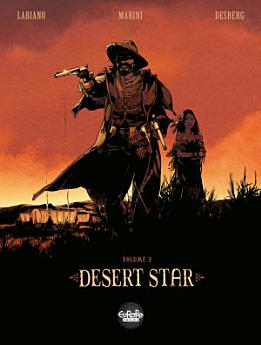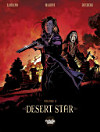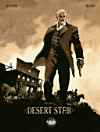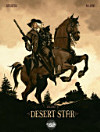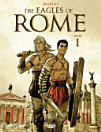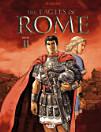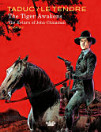Desert Star
About this ebook
About the author
Né à Bayonne en 1963, Hugues Labiano s'est vite imposé parmi les dessinateurs majeurs de sa génération. Monté à Paris en 1984, après une enfance landaise et un bac d'arts plastiques dans sa ville natale, il a débuté en dessinant pour des fanzines tels que «Sapristi» et «Bulles Dingues». Sa carrière a cependant véritablement démarré en 1988 avec l'illustration d'un «Voyage au Coeur de l'Europe du Moyen Age» (scé.: P. Brochard – Hachette Jeunesse), de courtes BD dans les mensuels «Circus» et «Vécu», un album sur et pour la ville du Havre («Premières Tempêtes» - scé.: Bethisy – Dynamick). A partir de 1989, il participe au collectif «Canal-Choc» que dirigent Christin et Mézières aux éditions Alpen et réalise «L'Image disparue" et «Les Capitaines aveugles» en 1990, puis «Les Corps masqués» en 1991. En 1992, il publie «Lune gitane», le premier volume du triptyque «Matador» (scé.: G. Jakupi – Glénat). Suivront «La Part du Feu» en 1993 et «L'Orgueilleux» en 1994. En 1997, pour Dargaud, le scénariste J. Dufaux l'entraîne sur la «Dixie Road», ce qui lui vaudra le Prix de la Meilleure Série au festival d'Illzach en 2000. Avec «Mister George» et ses auteurs Rodolphe et S. Le Tendre, H. Labiano inscrit désormais son nom dans la prestigieuse collection «Signé» du Lombard. Photo : R.Scaglia
Né à Bruxelles le 10 septembre 1954, Stephen Desberg se rode au scénario dans l'ombre de Maurice Tillieux. Il collabore aux derniers récits de celui-ci sur "Tif et Tondu" ("Le Gouffre interdit" en 1978, puis "Les Passe-montagnes") et prend ensuite en charge l'écriture de cette série jusqu'au départ de Willy Maltaite (Will), en 1990. Scénariste quasi attitré de la famille Maltaite, il va produire d'autres récits pour Will (dont trois grandes oeuvres plus "adultes" : "Le Jardin des désirs" et "La 27e lettre" dans "Aire Libre", puis "L'Appel de l'enfer" chez PetT Productions) et pour son fils, Eric, avec lequel il développera successivement "Jules et Gil", "La Famille Hérodius" et la série de l'agent secret "421" pour SPIROU, avant de se tourner vers un humour plus adulte dans "Carmen Lamour" chez PetT Productions en 1993. Ainsi lancé, il imagine successivement dans SPIROU les séries "Mic Mac Adam" pour Benn dès 1978, un premier essai de "Billy the Cat" avec Colman en 1979, les aventures fantastiques de l'ange "Arkel" pour Marc Hardy en 1981 et l'ambiance africaine rétro de "Jimmy Tousseul" pour Daniel Desorgher en 1987. Chez Casterman, il s'associe avec Johan De Moor pour composer les personnages de "Gaspard de la nuit" et de "La Vache". Au Lombard, il écrit "Le Sang noir" pour Bernard Vrancken. Dargaud édite son "étoile du désert", saga illustrée par Enrico Marini. Parmi ses plus récentes création, il concient de signaler "Le Cercle des sentinelles" avec Philippe Wurm chez Casterman. C'est néanmoins le chaton "Billy the Cat" qui lui assure son plus grand succès lorsqu'il décide en 1987 avec Colman de relancer cette ébauche vieille de huit ans déjà. Ces nouvelles aventures vont déboucher sur une remarquable série d'albums, parcimonieusement produits par un dessinateur perfectionniste, et éveilleront l'attention de millions de téléspectateurs européens grâce à une série parallèle de dessins animés.
Enrico Marini, an Italian national, was born on August 13th, 1969, in Switzerland, where he studied illustration at the Basel Academy of Fine Arts. His style is influenced by American comics, Italian fumetti, French bande dessinée and Japanese manga, and he is an admirer of authors such as Milton Caniff, Alex Toth, John Romita Sr., Mike Mignola, Hermann, Jordi Bernet, Hergé, Giraud and Otomo. His career was launched at the 1987 Festival de la Bande Dessinée in Sierre, where he would compete with the most promising emerging talents. His own talent was recognized immediately, and he was entrusted with his first series, "Olivier Varèse," based on a script by Thierry Smolderen, produced by Alpen Publishing. In 1992, Marini and Smolderen tried their hand at something totally different with "Gipsy" ("Gypsy"), a flesh-and-blood sci-fi adventure with a real badass hero. Marini would then enter the realm of vampires with "Rapaces" (Europe Comics, "Raptors"), this time alongside Jean Dufaux. With Stephen Desberg, he fulfilled his childhood dream of creating a western-style comic, "L'Étoile du désert" (Europe Comics, "Desert Star"). Together they co-wrote "Le Scorpion" ("The Scorpion," Cinebook), a massive swashbuckling adventure series. More recently, since 2007, Marini, now a full-fledged writer, has been bringing ancient civilizations back to life with the epic saga of "Les Aigles de Rome" (Europe Comics, "The Eagles of Rome"). He followed that with "Batman: The Dark Prince Charming" (published by DC), one of his most ambitious projects to date. His latest work includes the gritty and beautiful graphic novel "Noir burlesque" (Dargaud, Europe Comics in English). He is known to be one of the rare comic artists who inks and paints his original art by hand directly on the page.
